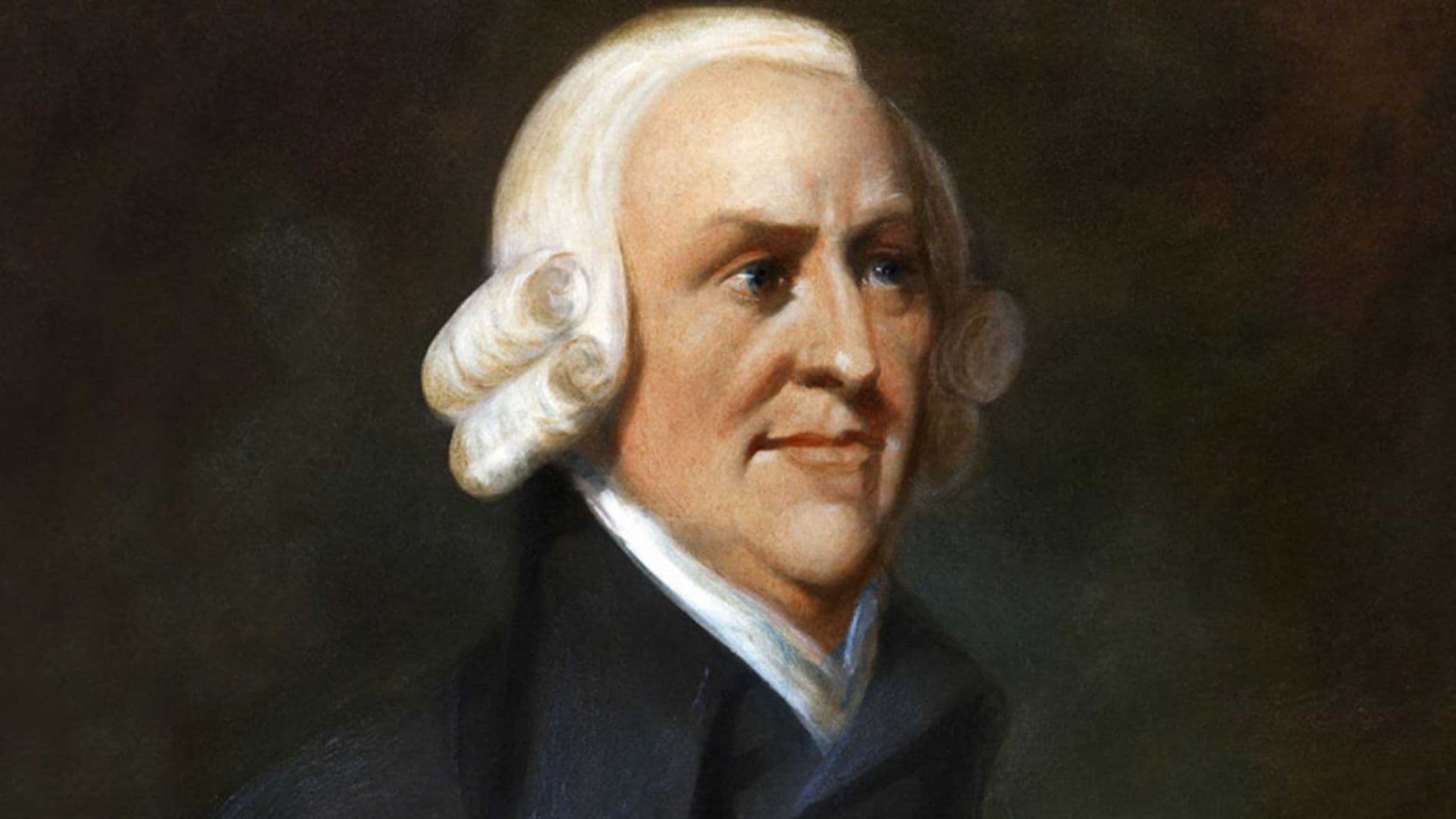Adam Smith and the Virtues
It is a well-known fact that Adam Smith, often called the “Father of Economics,” was a professor of Moral Philosophy and Jurisprudence in Scotland, and his book The Theory of Moral Sentiments (already discussed in a previous article on this blog) made him a recognized name in moral thought in the second half of the 18th century. In that book, Smith defended the idea that people form moral judgments from a sentiment he called “sympathy,” which can be simply explained as the ability to put themselves in the place of others and act in such a way as to consider how others would feel if they were affected by their actions.
Since Smith’s theory is basically emotivist, it may seem strange to associate it with virtue, given that virtue must always be considered in the light of reason. Virtuous behavior, ever since Aristotle, has been associated with the capacity to rationally analyze a situation and decide what to do in light of the different virtues. Smith, when speaking of rational behavior, relates it to self-interest; rational economic action is that which leads the agent to act according to his own interest, and its result is always defined as a benefit to the agent.
Fitzgibbons (1995) analyzes the role of virtues in Smith’s economic thought and concludes that, for the Scotsman, the utilitarianism present in the moral writings of David Hume and the pursuit of a virtuous life idealized by the Stoics are opposing ethical philosophies, each with its own problem: for Smith, Hume’s system lacks moral content (as it dispensed with divine authority, something unthinkable for the Father of Economics), and the Stoic system had been designed for a world that no longer existed. Nevertheless, the pursuit of a virtuous life advocated by Stoicism represents the highest aspiration of human beings and a good for society as a whole; Smith denies that virtue could be the foundation of politics because he admits that only an elite of society could be effectively virtuous since, in his words, “virtue is excellence, something uncommonly great and beautiful, which rises above what is vulgar and ordinary” (SMITH apud FITZGIBBONS, 1995, p. 46). Therefore, unlike Plato, for example, Smith did not believe that a political system could be based on a virtuous elite without running the risk of degenerating into tyranny.
Smith considers that modern society is characterized by self-love, which would inevitably conflict with virtue, which he sees as an action directed toward the good of others and, by generating this good, producing it for the individual as well. Hence the need for a moral principle to inform virtue, a higher principle of moral impartiality that would lead a person to act rightly regardless of who the object was or who would be affected by such action – and, as we have seen, this principle is that of sympathy.
Fitzgibbons (1995) seeks to tie together the elements of Smith’s thought by linking The Theory of Moral Sentiments and The Wealth of Nations, affirming that society could become fertile ground for the cultivation of individual virtue if it were based on freedom; by allowing each person to pursue their own plans according to their interests, society could generate the best economic fruits. A good “moral climate” would be required for the economy and society to prosper, and such a moral climate would demand virtuous actions based on justice, self-command, benevolence, and the use of wisdom or prudence.
In conclusion, Smith points to what economists from the second half of the 19th century onward ignored, whether seduced by the siren song of Marxism (which prevents social cohesion by establishing two economically determined and opposing moralities) or deceived by the mathematical formalization of general equilibrium (which determines that everything that cannot be quantified must be treated as “given,” and thus excluded from study): however difficult the relationship may be, economics cannot exist without a moral order.
REFERENCE
FITZGIBBONS, Athol. Adam Smith’s system of liberty, wealth, and virtue. Oxford: Clarendon Press, 1995.




